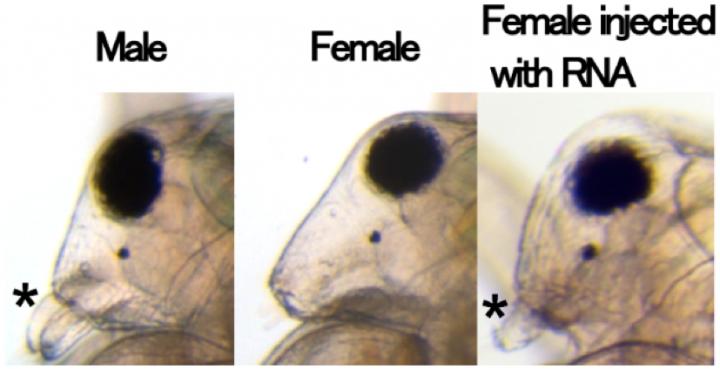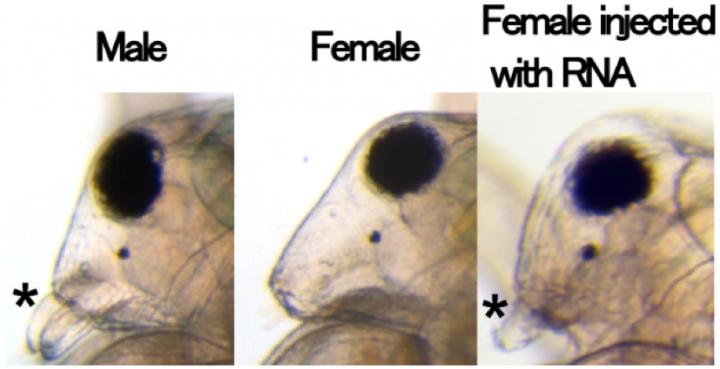
Credit: Osaka University
The messenger RNA (mRNA) that conveys genetic information has a region that can be translated into protein (translated region). A noncoding area (ncRNA), which has no translated region (TR), has not been thought to be important; however, recent studies revealed that ncRNAs are transcribed from thousands of loci in genomes.
Of the ncRNA, the number of long noncoding RNAs (lncRNAs), RNAs with greater than 200 bases, is said to be over 20,000 in human. However, commonality and diversity in the mechanism of IncRNAs, as well as conservation of their function among living organisms, have not been clarified.
Researchers led by Hajime Watanabe at Osaka University discovered lncRNAs to activate the male-determining gene doublesex1 (Dsx1) necessary for sex determination in the crustacean Daphnia magna. Their research results were published in Current Biology.
The researchers had found that proteins produced from the TR of the Dsx1 gene induced masculinization in the crustacean Daphnia magna. (Figure 1 top)
"In this study, we discovered an interesting phenomenon: masculinization is also caused by the untranslated regions (UTRs) on a strand of mRNA. The UTRs do not form the protein-coding region of the Dsx1 gene," said lead author Yasuhiko Kato. (Figure 1 center, Figure 2)
Proposing the hypothesis that a sequence in the UTR of the Dsx1 gene also serves as part of lncRNAs and naming the RNA doublesex1 alpha promoter-associated long RNA (DAPALR), the researchers examined the synthesis and function of the RNA. As a result, they found that the UTR overlapping with part of DAPALR-activated Dsx1, by which Dsx1 proteins were produced, causing masculinization. (Figure 1 bottom, Figure 3)
Their achievements will contribute to the understanding of the functional mechanism of lncRNAs as well as diversity in and evolution of the sex-determining mechanism.
###
Osaka University was founded in 1931 as one of the seven imperial universities of Japan and now has expanded to one of Japan's leading comprehensive universities. The University has now embarked on open research revolution from a position as Japan's most innovative university and among the most innovative institutions in the world according to Reuters 2015 Top 100 Innovative Universities and the Nature Index Innovation 2017. The university's ability to innovate from the stage of fundamental research through the creation of useful technology with economic impact stems from its broad disciplinary spectrum.
Website: http://resou.osaka-u.ac.jp/en/top
Media Contact
Saori Obayashi
[email protected]
81-661-055-886
@osaka_univ_e
http://www.osaka-u.ac.jp/en
Original Source
http://resou.osaka-u.ac.jp/en/research/2018/20180525_1 http://dx.doi.org/10.1016/j.cub.2018.04.029





